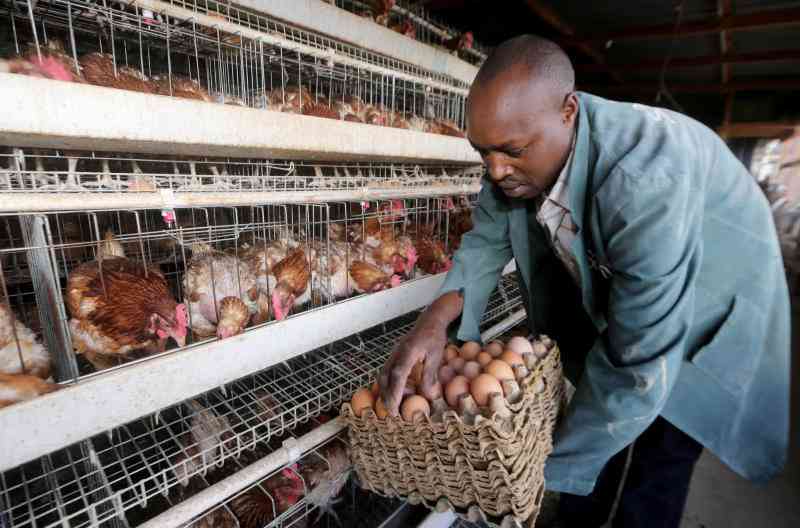
Dear Daktari
I am a dairy farmer based in Eldoret. I have known that lack of appetite is a clinical sign for a disease.
However, I have observed that sometimes my animals eat too much. Could this be a clinical sign of a disease because I was expecting an increase in milk yields but this is not thE case. What could be the problem because I de-worm every three months?
[Jacob Rotich, Uasin Gishu]
Thank you Rotich for your question. Yes, as you have rightly observed, sometimes an increase in feed consumption does reflect in milk production or growth rate.
There might be an internal health problem, an enabling environmental condition or it could just sometimes happen when your animal is 100 per cent healthy but is adjusting to a physiological need by eating more.
The environmental enabling condition is always created by the farmer himself through the animal husbandry practice.
Weather conditions can also make an animal to eat more feeds. Animals will eat more in cold weather, while in hot seasons they drink more water.
Check the diet
Many farmers believe that overfeeding their animals, especially dairy ones, directly translates to increased milk production.
To achieve that goal, they haphazardly give multi-vitamin injections and lots of highly palatable feeds to the animal.
Where caution is not observed, this may result in overfeeding, which has fatal health repercussions.
So how can you tell if you are overfeeding your animal?
It can be detected through careful examination of the cow’s feeding behaviour or if you measure the amount of feed you give the animal.
This can also help. Good feeding records also help in feed management, which helps reduce feed wastage and monitoring if the cow is taking too little, affecting production.
Note that livestock will always have breaks between feeding to chew curd for ruminants or just to take a rest.
If the animal does not take breaks, something might be wrong. Be warned that overfeeding can result in fatal digestive system disorders like bloating, indigestion or impaction of the stomach.
Milk quality affected
It can also result in digestive system micro-flora changes, which can cause diseases. Some clostridial infections are also caused by overfeeding. In this case, the milk production will go down.
Overfeeding can also result in a nutritional disorder known as ketosis which is incomplete breakdown of fats. Ketosis affects milk quality.
Animals have a biological clock and left on their own they will know the amount to take depending on their level of production, physiological status and prevailing weather conditions.
However, caution should be exercised when sudden changes are experienced, for example, shifting from a season of feed scarcity to plenty; changing from dry feeds to young green vegetation. In such cases overfeeding can easily happen and the farmer should be on the lookout.
What to do to avoid overfeeding
Good feeding records can help you gauge the amount and type of feed required by an animal at a certain age or stage. Under zero grazing, make sure the animal gets rest between feedings and exercises.
Be careful when feeding an animal on highly palatable feeds as overfeeding can easily happen. Urgently call your vet when you suspect overfeeding based on the history and clinical signs of excessively distended stomach and laboured breathing.
Economic impact
Overfeeding is likely to cause digestive system disorders and in severe cases death, which is a loss to the livestock enterprise. To avoid such scenarios, give the animal enough feeds to support production, reproduction and growth needs.
[The writer is the Vet of the Year Award winner and works in the Division of Communication and Vet Advisory Services within the Directorate of Veterinary Services; [email protected]]
Want to get latest farming tips and videos?
Join Us
 The Standard Group Plc is a multi-media organization
with investments in media platforms spanning newspaper print operations,
television, radio broadcasting, digital and online services. The Standard Group
is recognized as a leading multi-media house in Kenya with a key influence in
matters of national and international interest.
The Standard Group Plc is a multi-media organization
with investments in media platforms spanning newspaper print operations,
television, radio broadcasting, digital and online services. The Standard Group
is recognized as a leading multi-media house in Kenya with a key influence in
matters of national and international interest.
 The Standard Group Plc is a multi-media organization
with investments in media platforms spanning newspaper print operations,
television, radio broadcasting, digital and online services. The Standard Group
is recognized as a leading multi-media house in Kenya with a key influence in
matters of national and international interest.
The Standard Group Plc is a multi-media organization
with investments in media platforms spanning newspaper print operations,
television, radio broadcasting, digital and online services. The Standard Group
is recognized as a leading multi-media house in Kenya with a key influence in
matters of national and international interest.








